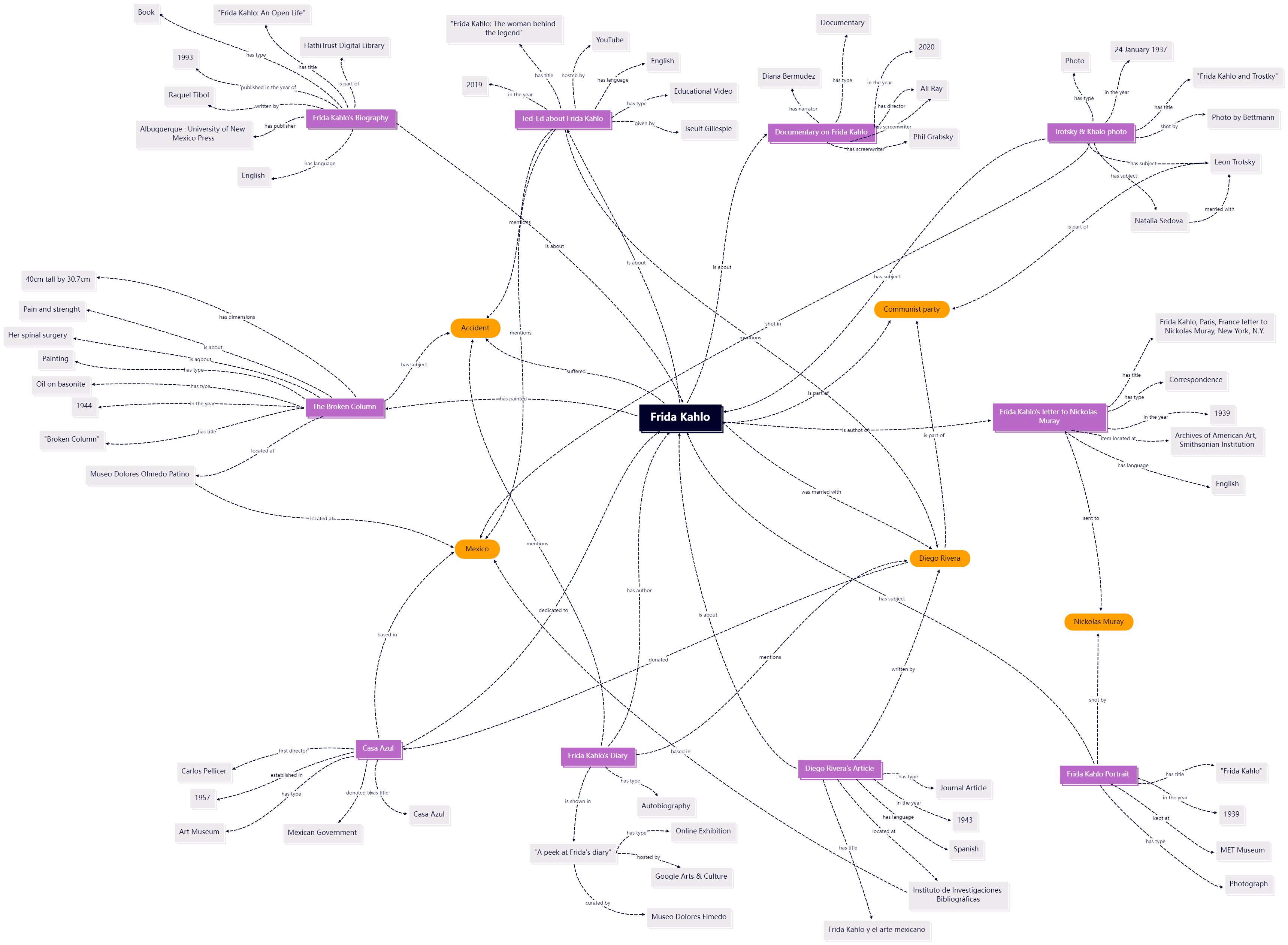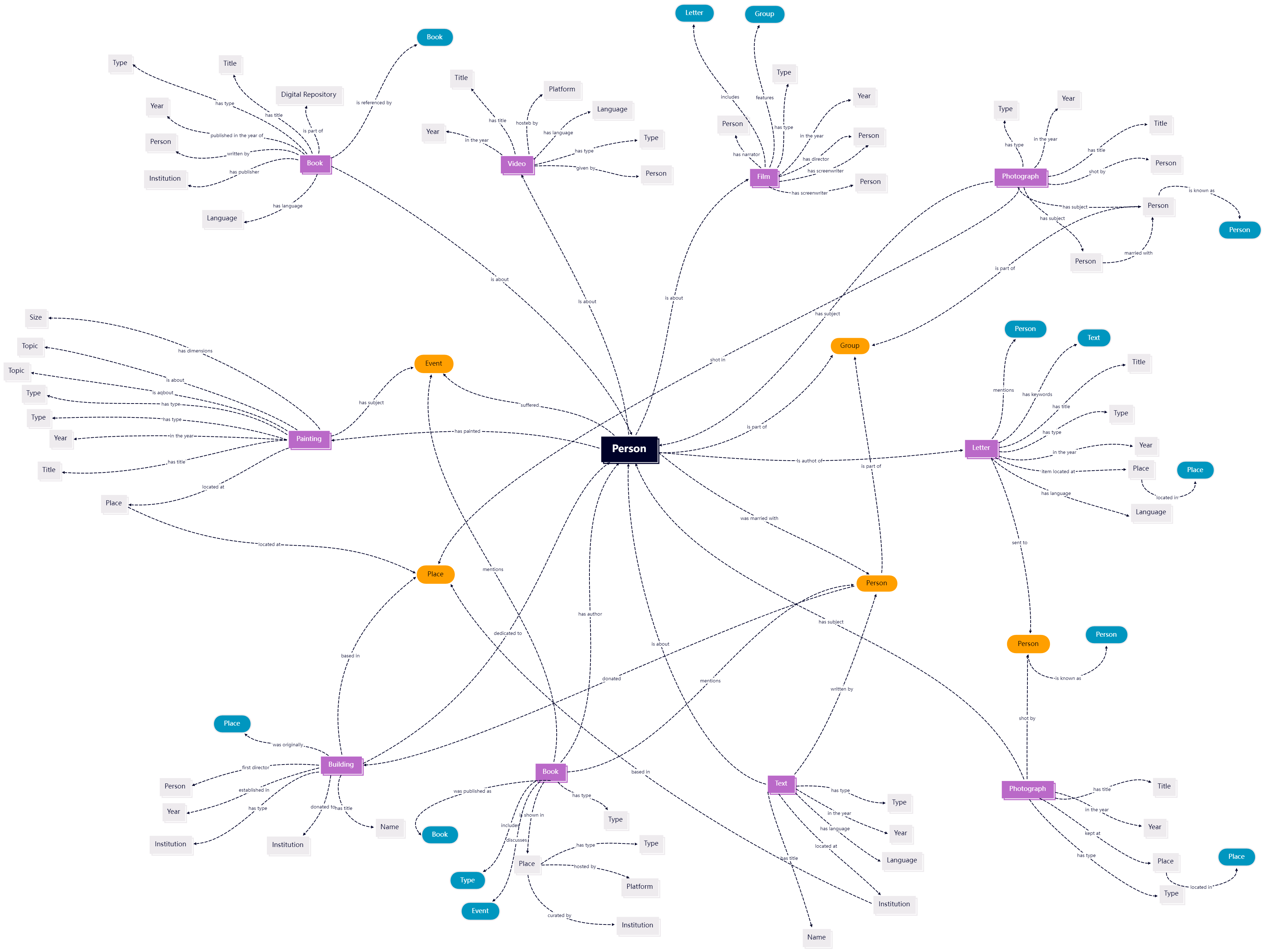Selected Items
The following are the 10 selected items we have picked for the domain of study
This documentary is a journey throughout Frida’s life. It depicts her turbulent but independent existance, her colorful paintings’ vibrancy, her intimacy sphere and the truth behind this iconic character.
This biography, written by the Mexican art critic Raquel Tibol, describes in detail Frida's medical conditions, while also analysing her letters, interviews and journals. This collection reveals Frida’s complexity: from sadness to her immutable creative spirit.
Although her relationship with the Communist Revolutionary, Leon Trotsky, only lasted a few months, the artist was deeply influenced by the Mexicanidad movement. Frida and her husband Diego, hosted Trotsky and his wife. Frida and Trotsky had an affair, but after some time they remained friends. As Stalin’s power grew, Trotsky’s supportered diminuished: he eventually got killed. Frida was questioned about his death but it was stalinist supporter who accomplished the murder. After their affair, Frida painted Trotsky: the Mexican Revolutionist kept on living through her art.
“Feet, what do I need you for when I have wings to fly?” This video from TED is a throughout description of Frida Kahlo’s experiences and sufferings, while also depicting the creative process behind her art.
In this letter to her lover, Frida talks about her illness and her feelings toward the sculptor-painter Marcel Duchamp. She references an upcoming exhibition to be held at Pierre Colle, and her ambition to organize an exhibition in London. She thanked Nickolas for sending her money with a pseudonym, but she also tells him that she has finances and doesn't need help.
La Casa Azul is the ultimate universe of Frida Kahlo. It is the place where she was born and where she spent the majority of her life. It was her intention to leave it as a memorial to herself, that’s why Rivera turned it into a museum after her death. This house contains both artists’ paintings, pre-Columbian sculptures, photographs, books, and clothes (corsets and Tehuana dresses).
In this article, Diego firstly displays the history of the founding cultures of the Pre-hispanic and Spanish periods and the 19th century. Mexican artists reclaimed their independence after colonialism. There were 2 main art streams: those who copied Picasso and Dalì, and those who expressed their personality and mind through art, like Frida did. This article represents one of the first art critics on Kahlo's Art.
In 1925 Frida was injured on a tram accident which crashed on a car at 18 years old. Pain and suffering are a constant topic in Frida’s painting. In this symbolic painting the split in her torso looks like an earthquake fissure. Dressed with a hospital sheet, a broken column is put in place of her spine, looking like she is breaking into pieces. She has tears on her face, but she sends a message of moral triumph.
Nickolas Muray was Kahlo’s friend and longtime lover. He took photos of the mexican artist between 1937 (after 6 years into the relationship) and 1948, they worked together in order to frame and compose the pictures. These 90+ scenes show Kahlo's resilience and individuality, as well as the most vulnerable moments of her life. Her Tehuana dresses are shown often.
Frida’s diary is a collection of notes and drawnings. It was a way of connecting with her own feelings, and conveying her ideas in her artistic practice. Symbolism is present throughout her diary. Blue is the color of electricity and purity, while yellow represented madness, illness, fear, sometimes the sun, and happiness. This online exhibition hosted by Google Arts and Culture keeps Kahlo's memory alive.











.png)


.png)